Majella Park, what to see: 10 stops among nature, history, art
In Abruzzo there is a natural park “overlooking the sea”: it is the Majella National Park, which with the mountains of the Majella Massif, the Pizzi Mountains, the Mount Porrana group and the Morrone chain is one of the green hearts of Italy that for its peculiar rich biodiversity since 2021 is part of the UNESCO World Geoparks. An international recognition that gives credit to one of the places with many unique features, including that of proximity to the sea (30 km from the Adriatic Sea) and the steep ascent to the 2793 meters of the highest peak, Mount Amaro, and with more than 30 peaks exceeding two thousand meters. Majella Park covers an area of 74 thousand hectares of protected area that brings together some of the richest fauna on the continent (including the famous wolf and Marsican bear, chamois, otters, roe deer, deer, 40 species of mammals in all, 130 species of birds, 2,200 plants of which 5 are exclusive to this park), and contains a third of the entire Italian flora, but also a lot of history: a park that is told from the Paleolithic with fossil remains, caves and karst rivers with caverns of stalactites and stalagmites, tunnels and abbeys, hermitages and places of worship (the park’s geological heritage is deeply linked to its cultural and religious heritage: many caves are of archaeological interest and the steep rocky slopes of its mountains have been frequented since the Middle Ages by hermits as places of solitude and asceticism) that mark the time of human life here in the park over the centuries. The park contains within it culturally interesting urban centers such as Sulmona, Guardiagrele, Corfinio, Palena, Fara San Martino, Pratola Peligna, Pacentro, Pescocostanzo, Manoppello, Caramanico Terme, Popoli, Serramonacesca and Pretoro. Let’s look at ten must-see stops on a trip to the Majella Mountains.
1. The Abbey of San Liberatore in Majella.
Within the Park, in the municipality of Serramonacesca, in the province of Pescara, is the Benedictine Abbey of San Liberatore a Majella: splendid. It is the most important example of Abruzzo’s romantic architecture, made of tanned stone, with a bell tower in a square base, has a structure on three naves crossed by seven arches resting on pillars and concluded by the typical Benedictine frame, each of which ends with a circular apse. The floor has a mosaic dated to the 13th century, and there are important cycles of frescoes in the apses. Adjacent is the monastery, one of the oldest in Abruzzo, but the dating is uncertain with two different traditions (one reporting construction coeval with St. Benedict and one instead at the time of Charlemagne) although certainly a community of monks in 884 was already present when Abbot Bertario’s Memoratorium on the possessions of Montecassino in the Theatine Abruzzo was compiled. Collapsed, rebuilt, and restored over the centuries by earthquakes and neglect, it nevertheless retains the charm of its ultramillennial history.
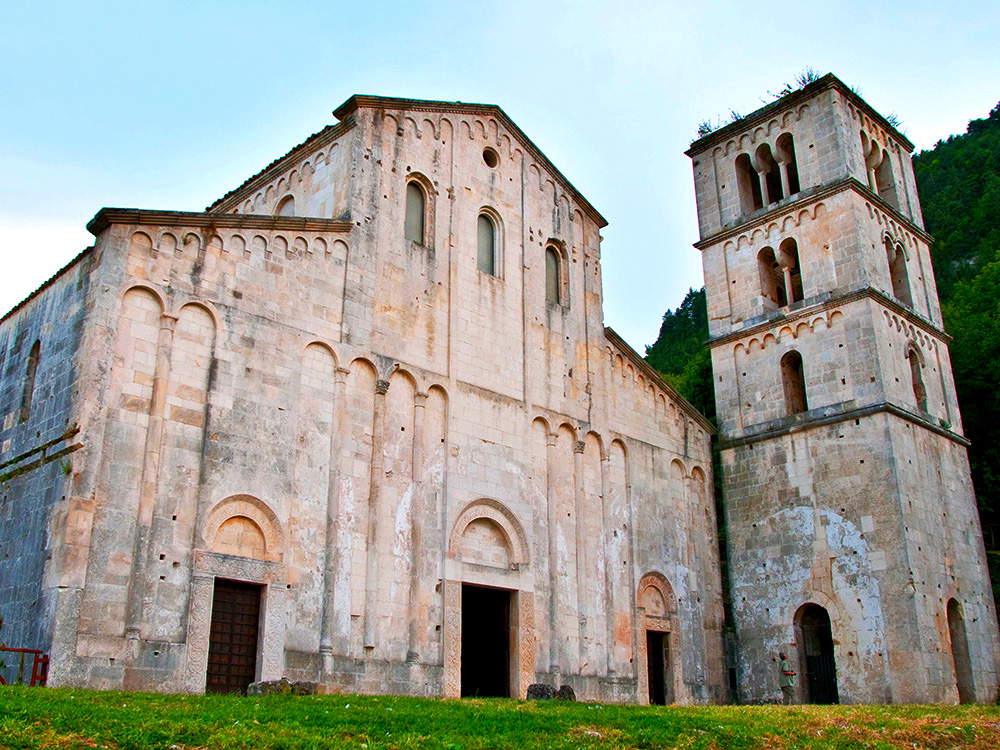
2. The hermitage of Santo Spirito a Majella.
Isolated and set in a wonderful environmental context but climatically so difficult, there is a hermitage that has the church practically incorporated and fused with the rock of the mountain: we are talking about the hermitage of Santo Spirito a Majella, in the municipality of Roccamorice, in the heart of the Park. To see it is to be astonished: one wonders what brought such conviction and faith to want to build something here-an articulated complex of buildings leaning against, rather than perched on, the rock face of the Morrone Massif. The technique is typical of the place: the hermitages of Majella take advantage of the natural shelters created by the rocks of the mountains to insert themselves and build or carve into the rock further. Its history is linked to that of Pope Celestine V, Pietro da Morrone, referred to as the pope of the “great refusal,” who chose these very places to isolate himself after three and a half months of his pontificate, renouncing the “Office of Roman Pontiff,” as did Benedict XVI in 2013. For the record, another future pope, Victor III, the blessed Robert of Salle, and Cola di Rienzo dwelt here. After various changes over the centuries according to religious evolution (from a hermitage it became an abbey and then a monastery by amalgamating another monastery), we find today on a leveled terrace of the rock the 16th-century church (after various renovations that supplanted the medieval structure) and the hermitage proper consisting of a room with a crucifix. It is an Italian national monument and for one month each year there is plenary indulgence of one’s sins (for the Catholic Church) for those who come this far.
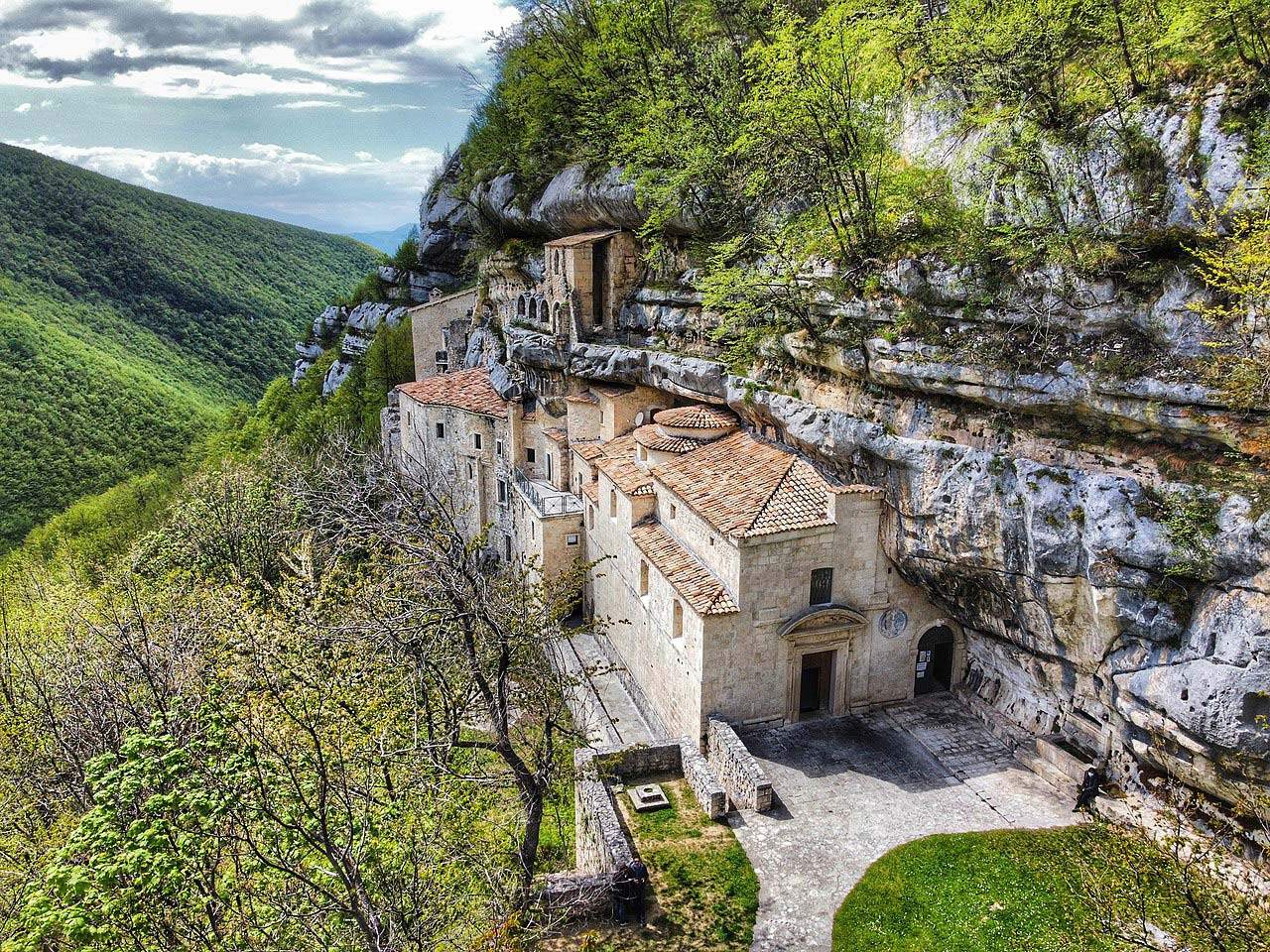
3. The Alento Gorges.
From the Abbey of San Liberatore, one can take a path and in thirty minutes we find ourselves immersed in fine vegetation skirting the Alento River. Among small waterfalls, jumps, whirlpools, wooden bridges, and rocks of peculiar shapes and colors shaped by time and water, the path, of no particular technical difficulty, surprises step by step. Biodiversity spills out in every direction between crystal clear waters where you can swim among trout and rich vegetation full of animals never seen for a city boy. Here you will find three rock-cut tombs: Christian catacombs whose date is uncertain but are dated to the 8th-9th centuries. The sarcophagus-like shape surmounted by an arch is typical of Christian catacombs of the noble classes. The whole area has signs with signs, parapets and ropes to hold on to on the way.
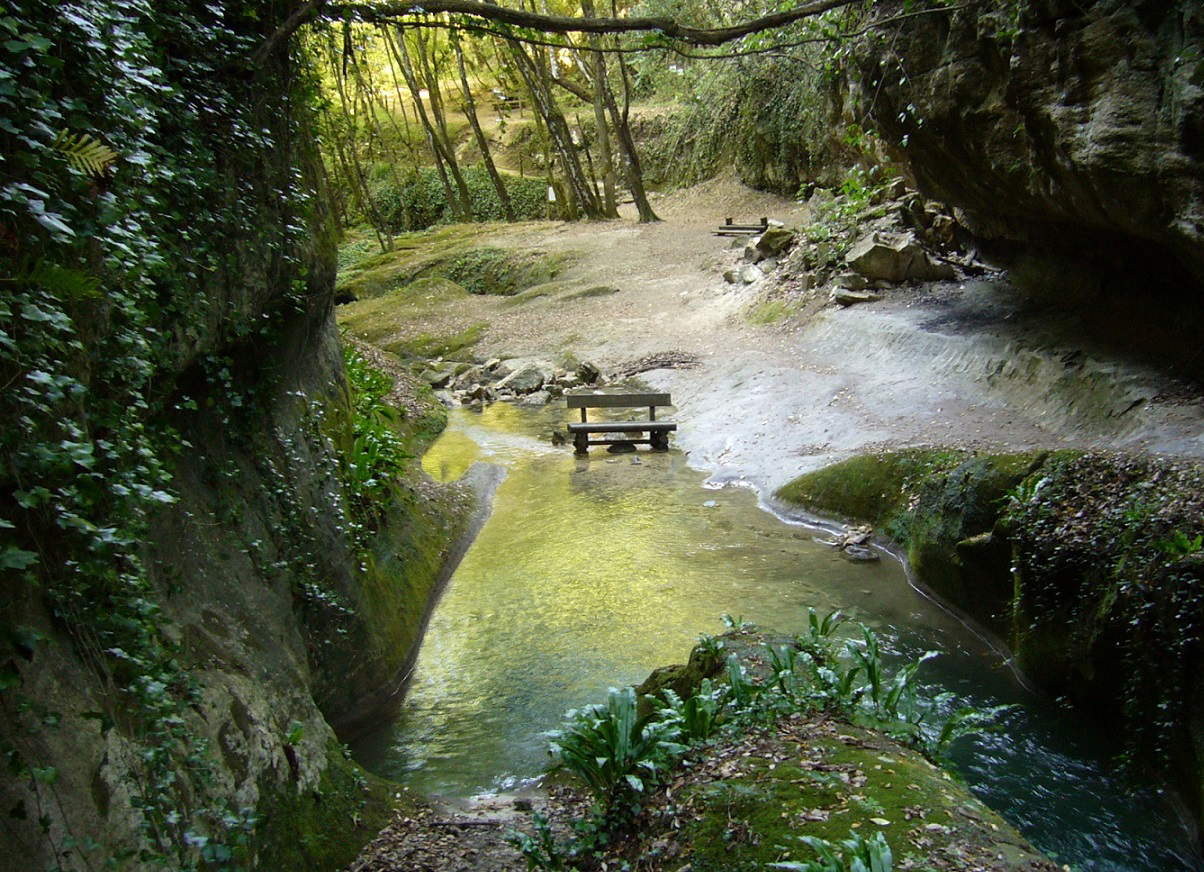
4. The hermitage of Sant’Onofrio di Serramonacesca.
In a natural cavity in the rock not far from the abbey of San Liberatore, a hermitage was built between the 11th and 14th centuries, the hermitageof Sant’Onofrio, which in 1294 saw Pietro da Morrone reside there: the future Pope Celestine V. Here in that year, after two years of “sede vacante” in Rome due to lack of agreement on the pope, two papal messengers climbed in to deliver the news of his election to the throne of Peter. Which, as is known, Celestine V would leave after five months. We are in the town of Serramonacesca, in the province of Pescara, at an altitude of 725 meters above sea level, a place of silence. What is visible today is the result of the work of enlargement, renovation and even major modifications that make it today a two-level complex in Romanesque style. From behind the altar there is access to tunnels where one spot is called the “Giaciglio di Sant’Onofrio,” where the saint is believed to have rested, now linked to the ritual of rubbing on a stone with supposed thaumaturgic properties.
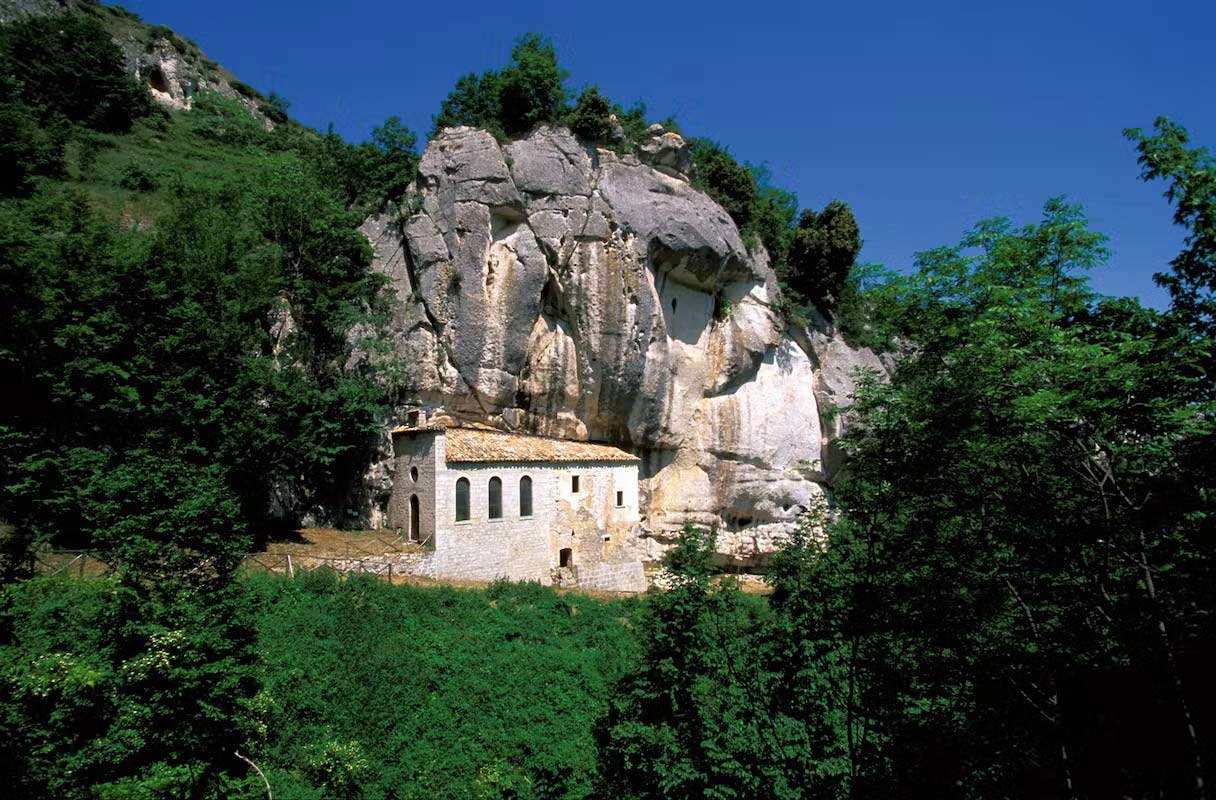
5. Menardo Castle
On the rocky Colle Ciumina, near Serramonacesca, from which the passages of the Val Pescara and the Majella passes are dominated, there are the remains of Castel Menardo: an imposing fortification allegedly built by Charlemagne between the 12th and 14th centuries to demarcate and control the boundaries of his possessions and positioned there to defend the Abbey of San Liberatore from possible Saracen attacks. A very fascinating and spectacular place, but little is left of the castle to clearly speculate on the formation of the structure. It certainly had mighty walls, the plan is triangular with a quadrangular structure on one end, with the presence at the other two vertices of two circular towers. Strong are the references to Cassinese fortifications.
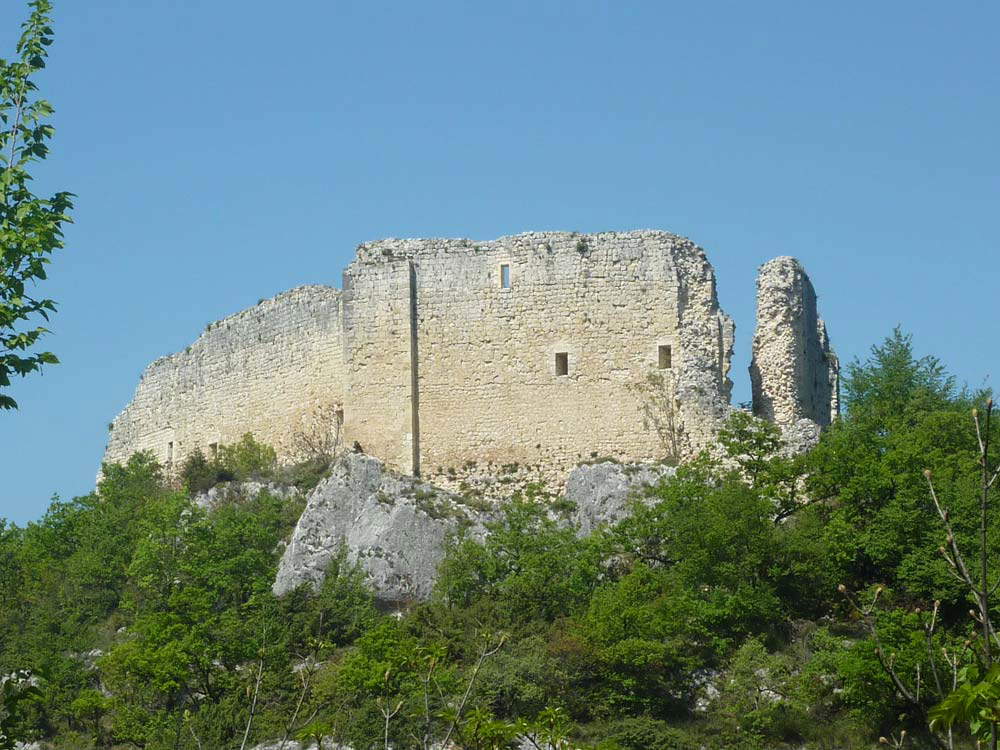
6. Roccamorice
The village of Roccamorice stands on a rocky outcrop with steep walls that rises between the Capo La Vena streams to the west and Fosso Pietraiata streams to the east, but the municipality has many other inhabited centers for a total extension of about 25 square kilometers. The territory is very rugged, and Roccamorice is famous for the presence of many hermitages and is a destination for religious tourism. The hermitages here are spectacular works of masonry adapted and set into the creeks of the rock: of the Hermitage of Santo Spirito a Majella we have already spoken, of the Hermitage of San Bartolomeo in Legio we will say more below. Of the village itself there is no certainty as to how and when it was built but it dates from around the year 1000, with presence of houses from medieval times, with the remains of the ancient fortification with an exposed stone tower. Much visited is what must have been the home of Celestine V before he retired to the hermitage of Santo Spirito. The portal is in stone with an ogival arch from 1444. Characteristic of this area are the tholos huts: made of dry-stone piles reminiscent of the Apulian Trulli, they were the work of shepherds who in removing stones from the fields built these structures where they could shelter or protect spring sources.
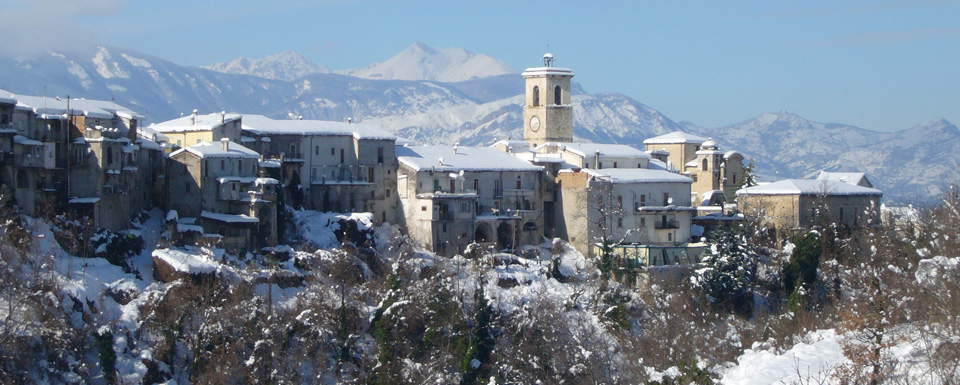
7. Caramanico Terme and Orfento Valley.
With a centuries-old history (as early as the 12th century, in the Chronicon Casauriense, there is mention of “putrid waters,” that is, thermal waters), Caramanico owes its development to the mineral, oligomineral and sulfur waters of the thermal baths, which have determined its wealth and notoriety, making it a point of reference for all of central Italy as a place devoted to rest and physical and respiratory care. Caramanico is a medieval village on 650 meters above sea level that is located in the nature reserve “Valle dell’Orfento,” established before the Majella Natural Park, and is situated on the confluence of the Orta and Orfento rivers, whose valleys characterize the entire territory. The main religious building and also the one of greatest artistic interest is the church of Santa Maria Maggiore of Romanesque-Gothic character of which we find documentation as early as 1059. Very interesting is the main doorway, in Gothic style, with rich sculptural ornamentation: superimposed edicolettes, figurations, pilasters, small columns and artistic capitals, was made by John of Lübeck and dates from 1476. The valley forged over the years by the river is among the most pristine spots on the entire Majella, and since 1971 it has been the subject of repopulation by animals such as deer and roe deer.
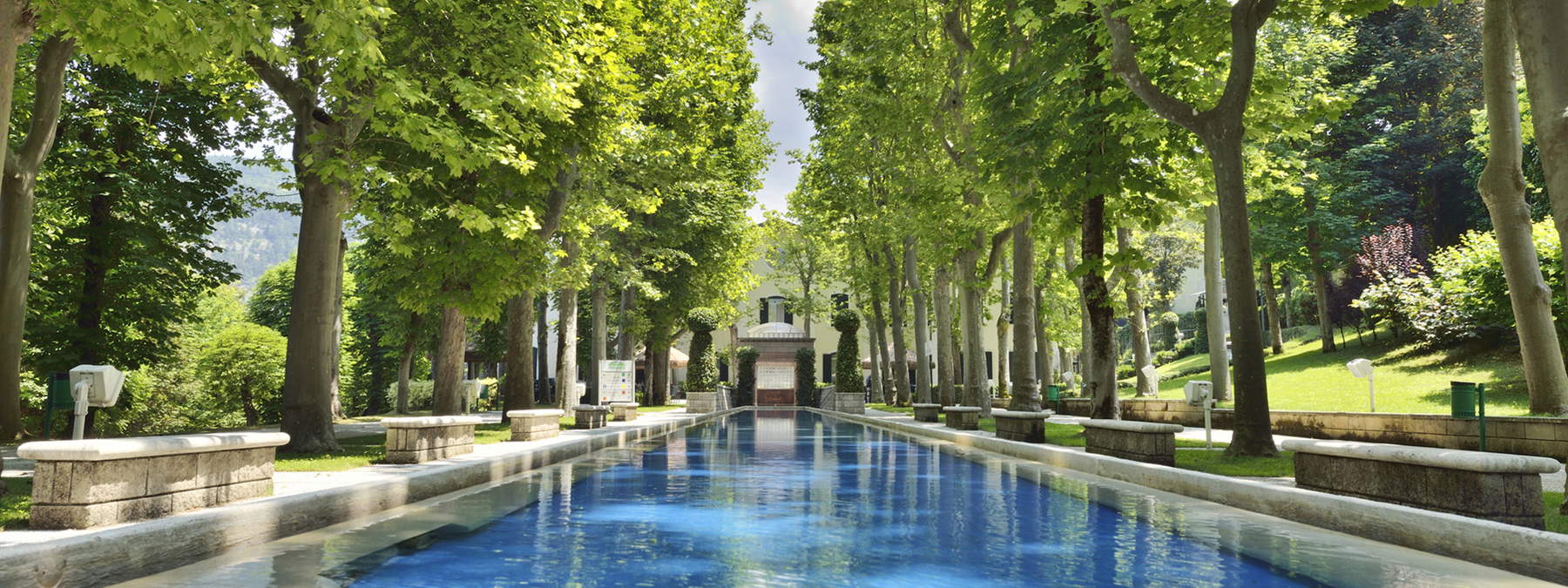
8. The Morrone Massif
The Morrone Massif is separated from the Majella group by the San Leonardo Pass and its main peak touches 2061 meters in altitude. Two hermitages have also been identified here, where the future Pope Celestine V, later proclaimed a saint, came to pray. And just below one of them (in the territory of the municipality of Sulmona) we find a large Roman sanctuary dedicated to Hercules Curinus (4th-3rd centuries B.C.), protector god of springs and healthy waters as well as of merchants (it is no coincidence that we are on the way to the sea or down to Puglia). An archaeological site of great importance also for the grandeur deployed for the work and for the discovery of the bronze statuette of Hercules at rest (exhibited at the National Archaeological Museum Villa Frigerj in Chieti) found inside the sacellum, in addition to the marble statue and a small column with 12 graffiti verses, attributed to Ovid (who was a native of ancient Sulmo): it is certainly one of the most important places of worship in Roman times. At the end of the “social” war between Romans and peoples previously their allies, it was enlarged and made mammoth and multi-level with terraces and stairways. It is speculated that on one terracing there were 14 covered rooms with barrel vaults and a huge podium 71 meters long. A two-flight staircase leads from this terracing to the upper terrace, the oldest, at the center of which is the sacellum that preserves part of the rich wall decoration. The large staircase to the south because of its grandeur is speculated to have served as a monumental entrance. The upper terrace was enclosed on three sides by a colonnaded portico. On the second ramp are preserved the fountain, which took water from a spring further upstream, and the “donario,” a hollow stone block in the center and originally closed with a lid. The altar covered with bronze slabs and the small shrine of the deity were located in the center of the upper terrace. The floor is covered with a polychrome mosaic.
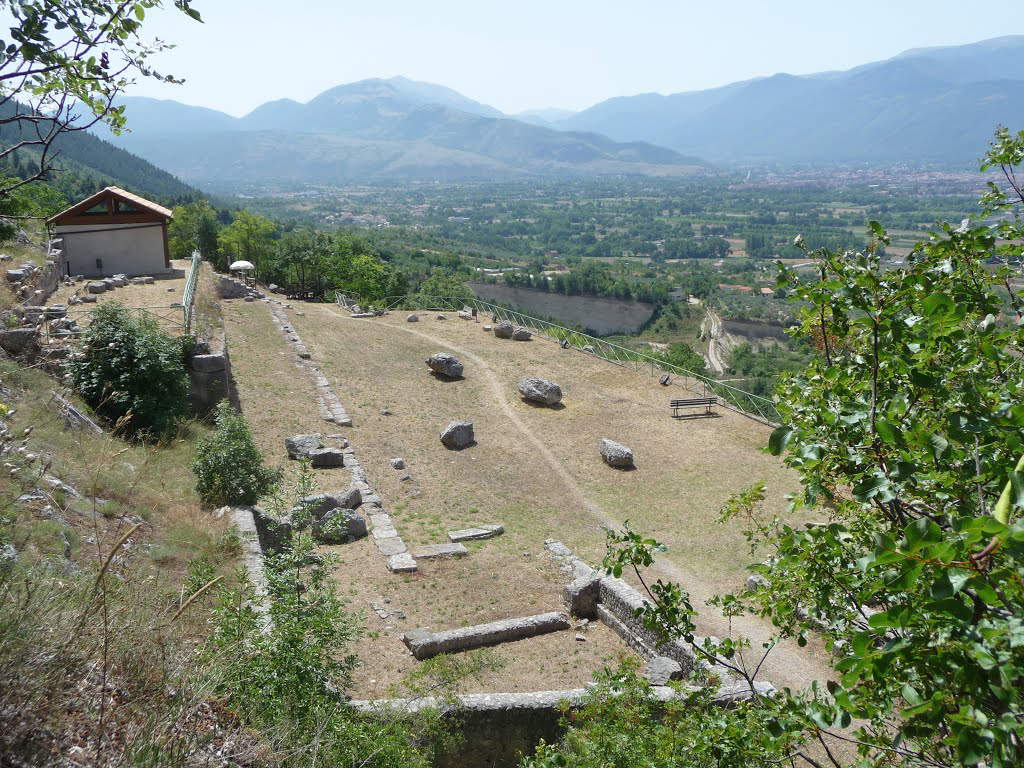
9. The hermitage of San Bartolomeo in Legio.
San Bartolomeo in Legio is one of the most famous hermitages in the Park both because it was inhabited by Celestine V and because its construction is spectacular: built in a period before the year one thousand (and later restored by Celestine V himself around 1250) it is reached by a stone staircase called the Scala Santa and is completely set in the rock, blending into the wall itself, which at that point had a recess and which with the hermitage wall instead seems to continue straight up the path of the rocky ridge, practically vertically. It is worth seeing. The interior is carved into the mountain and has 13th-century frescoes (like the exterior) and contains the 16th-century altar and a niche containing a 19th-century wooden statue of St. Bartholomew. Also located here is a small spring of water that is called St. Bartholomew’s water to which thaumaturgic properties are attributed. Outside there is a gallery and a basin for the water, and every August 25 many people come here just for the miraculous water by carrying the statue of the saint in procession to the Church of Roccamorice for the festivities.
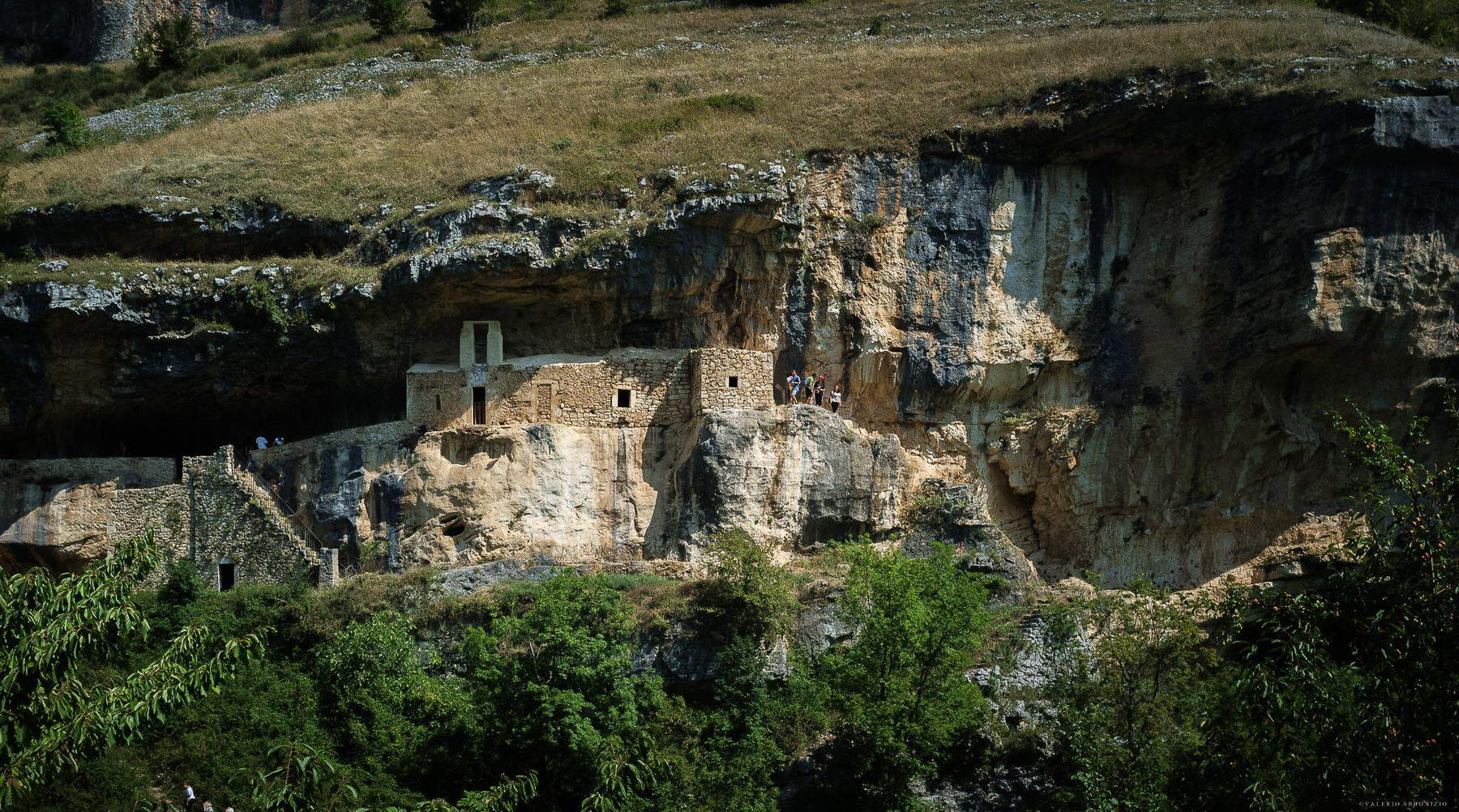
10. Guardiagrele
Guardiagrele is called the “terrace of Abruzzo” because of its position overlooking the valley and mountains from the ridge where it is perched, as per a good Longobard military garrison of the time (7th century). In the 15th century (during the Kingdom of Naples) the entire fortification of the town will count 33 towers. The village is famous for metalworking: here in the streets you will meet workshop masters who from iron to copper and gold have centuries-old traditions. The fine and elegant craftsmanship of goldsmithing made it a point of excellence for a long time (many valuable pieces of local sacred goldsmithing are preserved in the Cathedral Museum). The historic center, which winds along the ancient walls, is home to the monumental complex of San Francesco, inside which, in the sacristy, there is a late Renaissance fountain in white stone of great value and workmanship. Worth visiting is the Filippo Ferrari Archaeological Museum, which houses grave goods from tombs under tumulus (9th century B.C.) and the bronze statuette of a “bidder” from Comino, displays protohistoric grave goods (9th-3rd century B.C.) from the necropolis of Còmino di Guardiagrele and a collection of prehistoric materials from sites in the surrounding area. Here is the oldest stele in the Abruzzo area: the “Guardiagrele Stele.” It reproduces the features of a warrior from the 7th century BC. A curiosity: from Guardiagrele comes Giorgio Aurispa, the protagonist of Gabriele d’Annunzio’s Triumph of Death , and the village has a relevant importance in the novel.
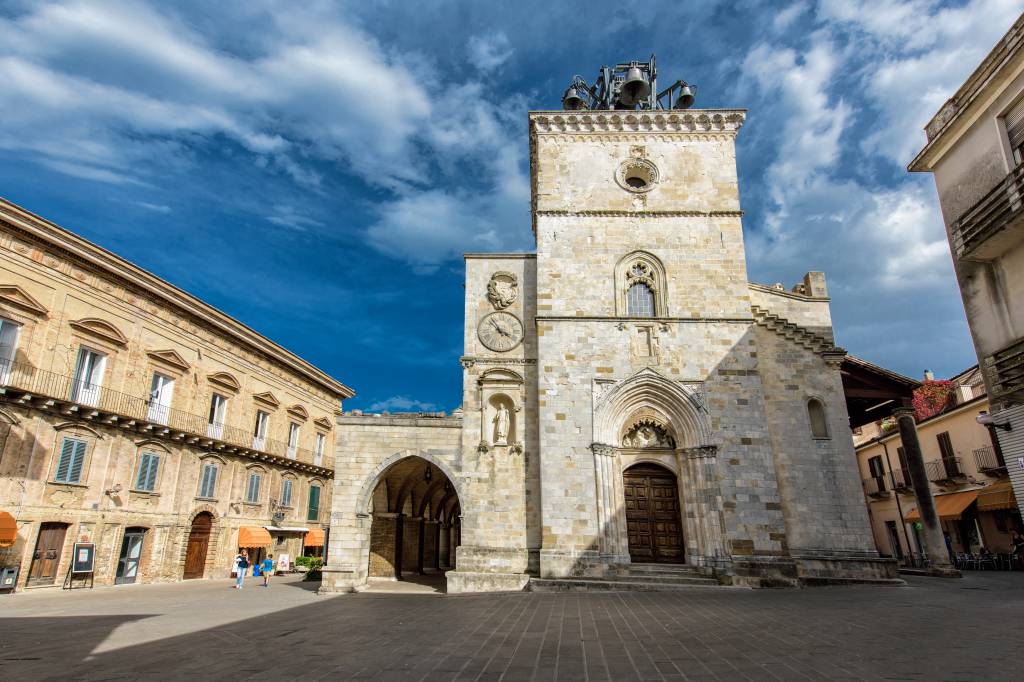
 |
| Majella Park, what to see: 10 stops among nature, history, art |
Warning: the translation into English of the original Italian article was created using automatic tools. We undertake to review all articles, but we do not guarantee the total absence of inaccuracies in the translation due to the program. You can find the original by clicking on the ITA button. If you find any mistake,please contact us.



























